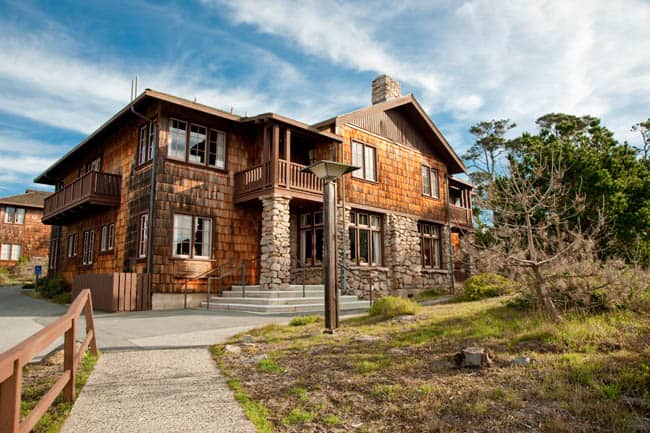
The Asilomar State Beach and Conference Grounds combines the scenic beauty of the Northern California coastline in Pacific Grove with distinctive architecture and historic venues. The name Asilomar means “refuge by the sea,” an apt title for a resort set within 107 acres of ecologically diverse beachfront land sprawling with nature trails and rustic charm.
“Asilomar Conference Center is surrounded by nature, with close proximity to the Marine Sanctuary, steps from the beach and sand dunes and nestled among beautiful Monterey Pines,” says Mairead Hennessy, district manager at Asilomar Conference Grounds. “Rich in history, the site features the largest collection of Julia Morgan-designed buildings in the world, the perfect place for groups to collaborate. Additionally, the opportunities for educational tours of the area and our eco-friendly and sustainable practices really add to the allure of Asilomar as a meeting destination.”
Asilomar’s story began in the late 1800s when the YWCA began to organize annual conferences on women’s social justice issues and workplace rights. The organization was led by some of the most influential women in California, such as Phoebe Apperson Hearst (the mother of publisher William Randolph Hearst who was the inspiration for ‘Citizen Kane’), who hosted the 1912 conference at a miniature tent city on her estate when their original venue was destroyed by fire. Hearst provided beds and equipment for 300 attendees, which would later become the original furnishings at Asilomar.
The event provided the inspiration to build a permanent YWCA conference grounds on the West Coast, and architect Julia Morgan was commissioned to design the original constructions in the Arts & Crafts style. This was a school of architecture that reacted to the increasingly mechanized industrial world of the Victorian age and emphasized craftsmanship and character above all. The conference spaces and accommodations designed by Morgan between 1913 and 1928 formed the foundation for Asilomar, and the 13 of her buildings that remain have been placed on the National Register of Historic Places.
Today, following several changes of management and much new construction in a style that pays homage to the original buildings, Asilomar combines state of the art conference facilities with a rugged coastal aesthetic perfect for rest and reflection. Its 313 guest rooms distributed throughout the grounds can accommodate groups of all sizes, and the resort offers 30,000 sf of flexible meetings space and a 24,000-sf exhibit area. Its oceanfront campus-style setting makes it ideal for group engagement with few distractions. Landmark conferences held at Asilomar include the 1975 Recombinant DNA conference and the 2010 International Conference on Climate Intervention Technologies.
Group activities at Asilomar include volleyball, bike riding, swimming, surfing and paddle-boarding. Complementary ranger-guided walking tours of the grounds give guests an opportunity to explore the rocky shoreline, rolling sand dunes, Monterey Pine forest and architectural heritage of the resort. Discover how life has adapted to survive within the unique coastal ecosystem and learn about the ongoing preservation of the sand dunes. Excursions off-site can include deep-sea fishing, kayaking, whale watching, scuba diving, horseback riding, wine tasting and golf.










